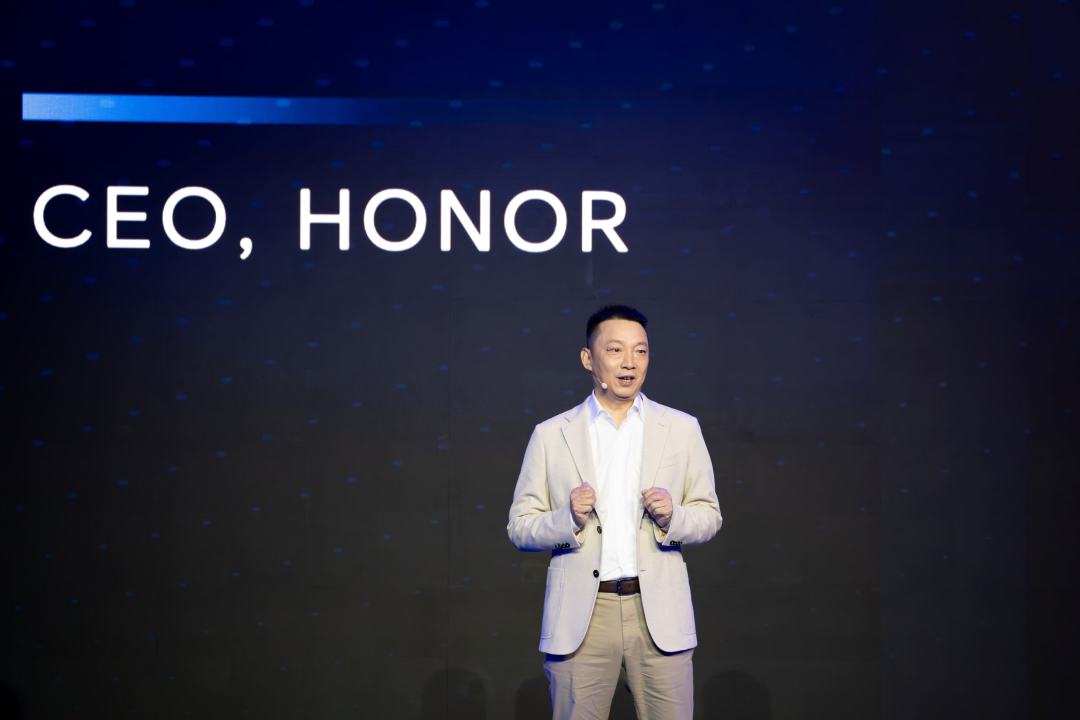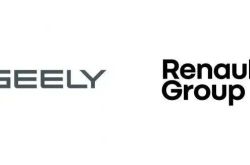A New Era for Honor: Li Jian's Mid-Year Review
![]() 06/09 2025
06/09 2025
![]() 694
694
Written by | Wen Yehao
Edited by | Wu Xianzhi
In 2025, Honor stands at another pivotal moment since its independence.
Earlier this year, Zhao Ming, a cornerstone of Honor for many years, stepped down, and the baton was passed to Li Jian. Li Jian emerged with a bold declaration: 'Honor did not die, but was reborn'.
The emphasis on 'not dead' stems from the challenges faced by Honor over the past six months. Xiaomi and Huawei have surged ahead, Apple has wielded the price sword, and OPPO and vivo have been steadily advancing in channels.
Li Jian's response to these challenges is 'change'. From the 'Alpha Strategy' announced at MWC 2025 to the subsequent 'Eagle Plan', Honor is attempting to craft a new narrative that transcends traditional confines.

From the outside, it may seem like an ambitious yet vague 'love letter' to the capital market. However, Li Jian appears determined to turn it into a reality.
To plant new seeds, one must first break the old shell. After this dramatic transformation, a revitalized Honor seems to be emerging. Yet, for Li Jian and Honor, mere survival has never been the ultimate goal.
Honor's Humble Revival
Honor's transformation journey actually began quietly during the Zhao Ming era, with AI taking center stage.
However, for this transformation to be grounded, Honor had to first solidify its foundation in the smartphone market. After its independence, Honor briefly topped the Chinese market but encountered setbacks in the second half of last year. The high-end market was intercepted by Huawei's Mate series, while OPPO and vivo countered in the low-end and mid-range offline channels.
IDC data shows that in the fourth quarter of 2024, Honor's domestic market share slipped to 13.7%, falling to fifth place. By the first quarter of 2025, it had dropped out of the top five.
Sales deceleration served as a dire warning, and Li Jian's primary task upon taking office was to reverse the declining trend.
Despite its internet brand origins, Honor has made significant efforts in the high-end market since its independence. However, its previous obsession with the high-end segment led to a somewhat closed and rigid strategy, gradually detaching from user needs. In practice, Honor seemed to have overlooked the importance of the mid-range market.
One of Li Jian's key initiatives after taking office was to humble Honor and reconnect with users.
Traditionally, a CEO's debut is often linked to high-end flagship models. For Li Jian, the Magic series, which embodies brand prestige, would have been a natural choice. Instead, he chose to debut with the mid-range Honor 400 series, signaling a shift in focus. This decision reflects Honor's commitment to surviving and thriving in the mid-range market, closest to users and crucial for shipments.
Taking the Honor 400 series as an example, its product features, launch timing, and marketing strategy all underscore Honor's desire to regain sales momentum.
The Honor 400 series boasts a 7200mAh 'Qinghai Lake' battery, a 200-megapixel main camera, with the standard version powered by the Snapdragon 7 Gen4 and the Pro version featuring the full-fledged Snapdragon 8 Gen3. This is a compelling offering in the 2000-3000 yuan price range.
Honor has also adopted a humble approach in offline stores. For instance, in an Honor store in a southwestern China mall, a huge billboard featuring spokesperson Xiao Zhan greets visitors, while the slogan "Use Honor, Go to a Prestigious University" loops on display screens. Even the shelves of high-end flagship models feature glowing lightboxes of the "Honor 400".
For this mid-range comeback, Honor prepared a reservation gift box with four options, including exclusive gift boxes for new and existing users, spokesperson fans, and students. This reflects Honor's aim to not just launch a new phone but to regain and expand its user base.
Worth mentioning is the strategic timing of the Honor 400 series launch, just before the college entrance exam.

A store clerk told Guangzi Planet: "Many parents who came these two days said their children must see the phone after finishing the exam, so pre-sales of the 400 were good. If you order now, the 400 doesn't need to wait, but the 400 Pro might take two or three days. It's not that the Pro is selling better; it's just that there isn't much stock at all."
At this stage, Honor seems to have abandoned its previous lofty narrative and returned to the trenches of the mid-range market with a more grounded stance. Although the market space for a single model is limited, Honor's aggressive promotion of the Honor 400 series during the college entrance exam period sends a signal of a fierce counterattack.
Li Jian's mentioned 'rebirth' may still be on the horizon, but Honor has learned to first regain its presence in the most visible market. Only by firmly establishing itself in this near-zero-sum stock war can Honor have the capital to tell the next chapter of its story.
Honor Beyond the Smartphone Realm
From foldable screens to AI, smartphone players are constantly seeking breakthroughs within familiar frameworks, eager to carve out new territories. However, reality remains harsh, and industry data fluctuates but has yet to truly leap forward. Smartphone manufacturers must eventually learn to step out of the besieged city of mobile phones.
Against this backdrop, Honor has followed industry trends and turned its gaze to cutting-edge technology fields - AI and intelligent robots.
While other smartphone manufacturers like vivo are betting on XR and robots as potential exits, Honor's pursuit of new avenues holds multiple meanings.
One unavoidable keyword is IPO. Honor's desire to go public has never been a secret. CFO Peng Qiuen stated more directly that preparations for the listing are underway and will be initiated at an appropriate time. This 'appropriate time' refers to when the company's strategic transformation bears fruit and performance aligns with market sentiment.
Honor recognizes that with fierce competition and meager profits in the current mobile phone industry, gaining the capital market's enthusiasm is challenging. Only by proving endogenous growth potential will it secure capital. Therefore, AI terminals, intelligent robots, and overseas expansion are all part of Honor's new narrative.
Taking AI as an example, Honor's bond with AI has always been strong. Earlier this year, Honor announced the 'Alpha Strategy' - investing $10 billion over the next five years to build an AI ecosystem encompassing mobile phones, computers, tablets, wearable devices, and new terminal forms.
However, the hotter the concept, the more it tests true implementation and delivery. For Honor, the key now is to find the central axis from 'imagination' to 'execution' in its new narrative.
Taking the Honor 400 series as an example, despite being a mid-range model, the conference still dedicated a significant portion to introducing AI beautification, AI noise reduction, AI flash photography, and other functions. However, in stores, clerks only mention eye protection and photography when recommending the phone, and AI seems to fade into the background.

This disconnect is not unique to Honor; at this stage, almost all smartphone manufacturers face the same issue. On one hand, users are not buying into the AI narrative, and on the other, terminal clerks at the end of the channel still rely on traditional selling points and have not kept pace with the AI narrative.
If making terminals 'smarter' can be considered a product evolution, then betting on humanoid robots is a strategic gamble for Honor.
At the end of May this year, Honor dropped a bombshell at its new product launch event - officially announcing its entry into the robotics industry.
Unlike vivo, which clearly focuses on the 'brain' and 'eyes,' Honor did not shy away from the mechanical structure and dynamics challenges of humanoid robots. Instead, it pushed humanoid robots into the spotlight. The prototype it showcased is reportedly capable of running at a speed of up to 4 meters per second, already at the forefront of the industry.
Choosing the humanoid route inherently carries its own topicality. On one hand, humanoid robots are seen as the ultimate form of AI+manufacturing, theoretically capable of performing diverse tasks in human-like environments, with infinite imagination space.
On the other hand, they are still in the 'proof-of-concept' phase, and it will be several years before a clear large-scale application scenario emerges. At this stage, making robots useful seems more important than making them more human-like.
Honor also admits that there is currently no timeline for the robot project to go to market, and the team is still engaged in a back-and-forth tug-of-war between core technology breakthroughs and demand research.
In other words, it will be a long time before Honor robots can be mass-produced and sold on a large scale. Its high-profile entry at this time may be more about showcasing its determination to 'take risks' and delivering new story themes to the capital market.
After all, another smartphone manufacturer, Xiaomi, leveraged the 'All in AIoT' story during its IPO and now relies on its bet on electric vehicles to maintain a high market value. As a rising star, Honor must come up with sufficiently large bets and dreams to compete for more capital premiums.
While this path seems ambitious, it is already surrounded by many competitors. For Honor, the key is not whether it can tell a good story but whether it can turn that story into a path to walk on.
The Compulsory Question of Overseas Expansion
Looking beyond the domestic market, Honor's global narrative is also a critical chess move.
Since 2022, Honor has been accelerating its overseas expansion in an all-round manner. It first returned to the mainstream European market, then penetrated more emerging markets, and in early 2025, it announced its entry into Indonesia - a must-win territory for smartphones.
By the end of 2024, Honor's overseas sales exceeded 50% for the first time, tying with domestic sales. Half of Honor's business is now rooted overseas.
It's worth noting that when Li Jian first took office, his years of overseas experience were repeatedly mentioned by the outside world. For Honor, his overseas experience is a valuable asset to navigate uncharted waters. By pushing him to the forefront, Honor seems to want to gain more possibilities in the deep waters of globalization.
Therefore, going overseas is not only a compulsory question for Honor but also for Li Jian.

However, at this juncture, Honor cannot yet provide a definitive answer. This is not because Honor has decelerated its overseas expansion but because it has chosen a more difficult and ambitious path.
In the past, Honor's overseas expansion strategy has not been to follow the trend of internal competition and grab market share with low prices. Instead, it has focused on the high-end, directly targeting the mid-to-high-end market above $300, openly challenging Apple and Samsung.
Even in Indonesia, where competition is extremely fierce, Honor refuses to trade low prices for market share. While opening up local channels, it also lays out self-operated experience stores, combining online and offline efforts to shape a high-end image.
However, Honor's high-end offerings have yet to truly shine on the stage. It is reported that Honor plans to launch a new foldable screen and high-end flagship Magic series in the second half of the year. This is not only to fill the product gap from the first half of the year but also the most crucial part of the overseas narrative.
At that time, it will be the moment to truly assess the quality of Honor's overseas story.
Of course, another possibility cannot be ruled out: Honor, which has already 'humbled itself' in the domestic market, may moderately adjust its strategy in the overseas battlefield - to fight a longer and tougher battle for market share.
Ultimately, the path Honor is walking today and the story it wants to tell are far from isolated. Its opponents include both established smartphone manufacturers and heavyweights from other industries. If Honor wants to confront them head-on, it must muster a 'desperate' determination and endurance.
And in the end, whether Honor deserves the name "Honor" will be answered by time.





